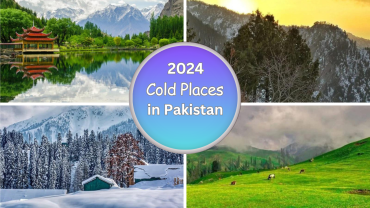The Image of Pakistan’s Capital
Faisal Mosque: Islamabad’s Notorious Image
Roosted against the setting of the Margalla Slopes, the Faisal Mosque remains as a dazzling token of Islamabad, catching the hearts of the two local people and sightseers with its grand presence. In addition to a position of love, this mosque is a mix of present day engineering and profound quietness, making it a must-visit milestone in the capital city of Pakistan.
A Show-stopper of Current Engineering
The Faisal Mosque is eminent for its striking plan, what splits from conventional mosque engineering. Its smooth, contemporary lines and four transcending minarets reverberation the rough outline of the Margalla Slopes. The mosque’s interesting tent-like construction is enlivened by a Bedouin tent, representing the mix of conventional Islamic culture with innovation. The extensive fundamental petition corridor and yard can oblige a huge number of admirers, mirroring the mosque’s comprehensive soul.
Heart of Islamabad’s Profound Life
Something beyond a design wonder, the Faisal Mosque holds a unique spot in the hearts of the Muslim people group. It fills in as a focal center for strict and far-reaching developments, drawing individuals from varying backgrounds to accumulate in petition and reflection. The mosque’s quiet vibe and entryways welcome guests to have the harmony and fellowship that lie at the center of Islamic qualities.
Inviting Guests from Around the World
The Faisal Mosque isn’t just for the individuals who come to implore yet additionally invites guests quick to respect its magnificence and find out about its importance. The encompassing nurseries offer a tranquil retreat, while the inside’s multifaceted subtleties feature the masterfulness and craftsmanship that have gone into its development. Whether you’re absorbing the all encompassing perspectives on Islamabad or finding a calm corner for thought, the Faisal Mosque offers a vital encounter for all.
1. Engineering and Plan:
The Faisal Mosque was planned by Turkish modeler Vedat Dalokay. Its extraordinary plan is a combination of contemporary and conventional Islamic engineering.
The mosque’s primary petition corridor is a tremendous open space with no customary vaults or curves. All things considered, it includes a slanting and interesting rooftop structure that looks like a Bedouin tent, giving it a cutting edge and particular look.
2. Size and Limit:
The mosque’s noteworthy size adds to its importance. It can oblige up to around 100,000 admirers in its request corridor and encompassing yards.
The gigantic petition corridor traverses north of 54,000 square feet, making it one of the biggest single petitioning God spaces on the planet.
3. Location:
The Faisal Mosque is arranged at the foundation of the Margalla Slopes, giving a pleasant scenery to the mosque.
It sits above the city of Islamabad and offers all encompassing perspectives on the encompassing region.
4. Construction:
The development of the Faisal Mosque started in 1976 and was financed by Ruler Faisal of Saudi Arabia, after whom the mosque is named.
It required close to 10 years to finish, and the mosque was initiated in 1988.
5. Social Importance:
The Faisal Mosque holds an exceptional spot in the hearts of Pakistanis as an image of current Islamic design and a portrayal of Pakistan’s solid binds with Saudi Arabia.
It isn’t just a position of love yet in addition a social and building milestone that draws in guests from around the world.
6. Open to All:
The mosque is available to the two Muslims and non-Muslims, and guests are free to investigate its design and tranquil environmental factors.
It fills in as a spot for supplication, reflection, and finding out about Islamic culture.
The Faisal Mosque remains as a famous illustration of contemporary Islamic engineering and keeps on being a significant strict and social site in Pakistan. Its extraordinary plan and verifiable importance make it a must-visit objective for those inspired by design and Islamic legacy.
Importance in Pakistani Culture
The Faisal Mosque holds huge social and emblematic significance in Pakistani culture. This is the way it is woven into the social texture of Pakistan:
1. Public Pride and Personality:
The Faisal Mosque is much of the time viewed as an image of Pakistan’s innovation and progress. Its exceptional and creative plan mirrors the country’s capacity to mix custom with contemporary thoughts.
As perhaps of the biggest mosque on the planet, the mosque has turned into a wellspring of public pride and a seal of Pakistani accomplishment.
2. Engineering Wonder:
The mosque’s unmistakable engineering separates it from customary mosque plans. Its offbeat plan addresses Pakistan’s eagerness to embrace new building ideas while holding Islamic standards.
This design wonder exhibits Pakistan’s capacity to add to worldwide structural advancement.
3. Strict Importance:
As a mosque, the Faisal Mosque assumes a critical part in the strict existence of Pakistan. It offers a spot for day to day petitions, Friday gatherings, and Islamic training.
Its loftiness and ability to hold countless admirers feature the significance of religion in Pakistani culture.
4. Solidarity and Variety:
Pakistan is a different country with different identities and dialects. The Faisal Mosque fills in as a bringing together space where individuals from various foundations meet up for petition and collective exercises.
It represents the solidarity of the Pakistani public, no matter what their different starting points.
5. Social Legacy:
The mosque features Pakistan’s obligation to safeguarding and advancing its social legacy. By building a mosque with a plan that is particularly Pakistani, the nation confirms its social personality.
6. The travel industry and Instruction:
The mosque draws in both nearby and worldwide travelers, offering them bits of knowledge into Pakistani culture, engineering, and Islamic legacy.
Its presence adds to instructive and social the travel industry, permitting guests to find out about Pakistan’s set of experiences and values.
7. Strategic Relations:
The mosque was a gift from Saudi Arabia, which fortifies the discretionary ties between the two nations. It represents major areas of strength for the connection among Pakistan and Saudi Arabia.
8. Workmanship and Craftsmanship:
The mosque’s development included the abilities of neighborhood skilled workers, craftsmans, and workers. It features their gifts and craftsmanship, adding to Pakistan’s social legacy.
Generally, the Faisal Mosque stands as a position of love as well as a social milestone that addresses Pakistan’s social qualities, creative undertakings, building accomplishments, and public pride. It is a demonstration of the country’s capacity to adjust, improve, and praise its character while regarding its strict customs.
Visiting the Mosque
Visiting the Faisal Mosque can be a paramount encounter. Here is a data to assist you with arranging your visit:
Location: The Faisal Mosque is situated in Islamabad, the capital city of Pakistan. It’s arranged at the foundation of the Margalla Slopes, offering beautiful perspectives on the environmental factors.
Opening times: The mosque is available to guests over the course of the day, however it’s vital to take note of that during petitioning heaven times, admittance to specific regions might be limited for non-Muslims. The mosque is normally open for vacationers after the morning petition (Fajr) and before the midday supplication (Asr). The specific timings might fluctuate, so it’s really smart to check the neighborhood petitioning God plan prior to arranging your visit.
Clothing regulation: Keeping in mind the strict meaning of the mosque, guests are supposed to unassumingly dress. For all kinds of people, it’s prescribed to wear clothing that covers your shoulders, arms, and knees. Ladies are likewise encouraged to cover their heads with a scarf. Abstain from wearing uncovering or unseemly attire.
Directed Visits: While the mosque is available to general society, directed visits may be accessible. These visits can give important experiences into the mosque’s engineering, history, and social importance. You can ask about directed visits at the mosque or through nearby visit administrators.
Etiquette: While visiting the mosque, noticing appropriate etiquette is significant:
Keep a conscious and calm disposition.
Take off your shoes prior to entering the mosque’s fundamental supplication corridor.
Switch off your cell phone or put it on quiet mode.
Abstain from taking photographs during petitioning God times or in regions where it’s restricted.
On the off chance that you’re not a Muslim, cease from entering regions assigned for supplication.
Exploration: Go ahead and investigate the mosque’s outside and its yards. The exceptional engineering of the mosque, alongside its encompassing nurseries and water highlights, offers a peaceful and quiet climate.
Regard Strict Practices: Assuming you’re visiting during petitioning heaven times, be aware of admirers and abstain from strolling before them while they’re supplicating.
Neighborhood Customs: Islamabad is a generally present day and cosmopolitan city, however it’s vital to know about neighborhood customs and customs. Recognizing the nearby culture will upgrade your experience.
Wellbeing and Security: Continuously adhere to any safety efforts or directions given by mosque staff. Be careful of your possessions and try not to leave them unattended.
Recall that the Faisal Mosque isn’t just a position of compositional excellence yet additionally a position of love and worship. By being conscious and circumspect, you can have a significant visit and value the social and strict meaning of this notorious milestone.
Faisal Mosque
End: Something other than a Mosque
Faisal Mosque fills in as a symbol of Islamabad’s horizon and stands as a demonstration of the consistent mix of Islamic practices with contemporary plans. Whether you’re looking for otherworldly comfort, structural appreciation, or simply a sample of Islamabad’s way of life, Faisal Mosque offers everything.
What is the Shah Faisal Mosque and where is it found?
The Shah Faisal Mosque is one of the biggest mosques on the planet, known for its striking contemporary plan and radiant setting against the Islamabad horizon and the Margalla Slopes. It’s situated in the capital city of Pakistan, Islamabad, filling in as a significant vacation destination and an image of the city’s personality.
Who planned the Shah Faisal Mosque and what roused its one of a kind engineering?
The mosque was planned by the Turkish designer Vedat Dalokay. Its plan was roused by a Bedouin tent and the Kaaba in Mecca, mirroring a cutting edge takeoff from conventional mosque design. The plan includes a primary supplication corridor molded like a desert Bedouin’s tent and four minarets that are among the tallest on the planet.
What number of individuals could the Shah Faisal Mosque at any point oblige?
The Shah Faisal Mosque can oblige more than 100,000 admirers, with the primary supplication corridor, patios, and encompassing porticoes giving adequate space. It’s known for facilitating one of the biggest assemblies during the Islamic sacred month of Ramadan and other critical strict events.
For what reason was the mosque named ‘Shah Faisal Mosque’?
The mosque was named after Lord Faisal container Abdulaziz of Saudi Arabia, who was instrumental in its subsidizing and a vital ally of the venture. The mosque remains as a recognition for his commitments and the solid Saudi-Pakistani relations.
Is the Shah Faisal Mosque open to non-Muslim guests, and are there a particular visiting hours or clothing regulations?
Indeed, the Shah Faisal Mosque is available to non-Muslim guests beyond petitioning God times, commonly during the daytime. Guests are encouraged to dress unassumingly, covering arms and legs, and ladies are generally expected to cover their heads. Checking the most recent visiting hours and rules prior to arranging a visit to guarantee a conscious and smooth experience is suggested.





Comment (0)